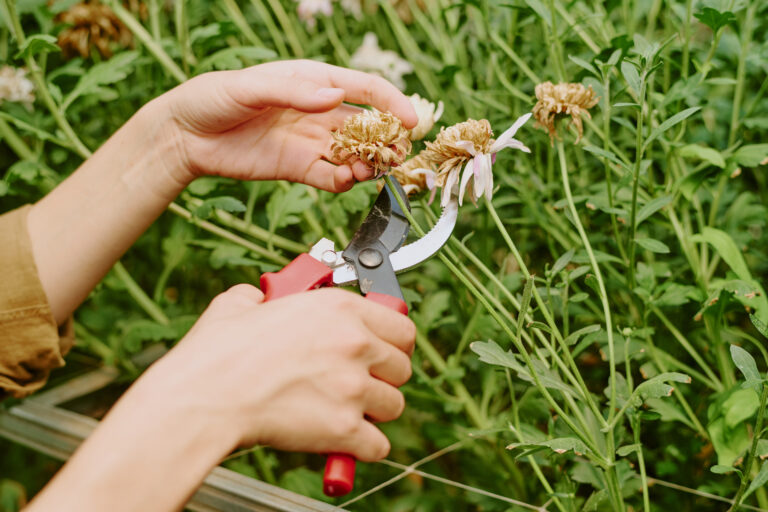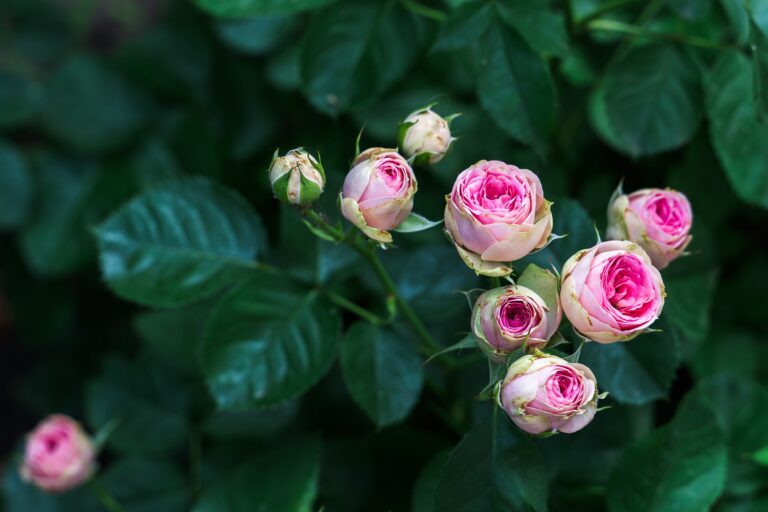Table of Contents
What is Deadheading and Why Does it Matter?
Deadheading is the practice of removing old, faded, or dying flowers from a plant. When a flower dies, the plant naturally shifts its energy into seed production. This is nature’s way of reproducing. However, when you remove the dying blooms, the plant thinks it hasn’t fulfilled its mission and will often attempt to produce more flowers to make seeds—resulting in new blooms.
This redirection of energy away from seed production has several major benefits:
Stimulates fresh blooms
Prolongs the blooming season
Improves plant health and vitality
Enhances garden aesthetics by preventing a messy look
When and How Often Should You Deadhead?
Timing is key. As soon as flowers start to wilt or lose their color, it’s time to deadhead. For most annuals and perennials, you can deadhead every few days during the growing season. Make it a habit while watering or walking through your garden.
Here’s a seasonal breakdown:
Spring to Early Summer – Deadhead cool-season bloomers like pansies and snapdragons to extend early color.
Mid to Late Summer – Cut back petunias, zinnias, and daisies that tend to get leggy or fade under summer heat.
Early Fall – Tidy up late-bloomers like mums and sedums to encourage a final round of color.
How to Deadhead: Step-by-Step Guide
Proper deadheading doesn’t require special tools, but using clean, sharp pruners or scissors can make the task easier.
Basic Steps:
Locate the spent flower – Look for blooms that are browning, shriveling, or dropping petals.
Follow the stem down – Identify the nearest set of healthy leaves or a bud below the bloom.
Make a clean cut – Snip or pinch the stem just above a leaf node or emerging flower bud.
Remove debris – Dispose of deadheads to prevent disease or pest attraction.
For example, with roses, cut just above the first set of five healthy leaves. For zinnias, cut back to a side shoot or set of leaves. Each plant has its own growth habit, so get familiar with yours. Deadheading is simple but should be done with care. Use clean, sharp scissors or pruning shears to make precise cuts above healthy leaves or buds. Not sure which tools are best for the job? Explore our 11 Essential Tools for Gardening: Beginners Guide to make sure you’re using the right equipment for all your gardening needs.

Best Flowers for Deadheading (with Examples)
Here’s a list of common flowers that respond exceptionally well to deadheading:
| Annuals | Perennials | Flowering Shrubs |
|---|---|---|
| Petunias | Echinacea (Coneflower) | Roses |
| Marigolds | Black-eyed Susans | Butterfly Bush |
| Geraniums | Shasta Daisies | Hydrangeas (some types) |
| Cosmos | Salvia | Lilacs (for shaping) |
| Zinnias | Coreopsis | Spirea |
Plants That Don’t Need Deadheading
Some plants naturally shed their spent blooms or produce new flowers without deadheading.
Self-cleaning or no-deadhead plants include:
Impatiens
Vinca
Lobelia
Fuchsia
Calibrachoa
Daylilies (may benefit from light cleanup)
Avoid wasting time deadheading these varieties unless you’re doing it for visual appeal.
Bonus Tips for Successful Deadheading
Deadhead in the morning or evening when plants are hydrated and temps are cooler.
Use deadheading as an opportunity to check for pests or mildew.
Combine deadheading with light pruning or fertilizing to boost regrowth.
Don’t overdo it—some plants benefit from selective deadheading rather than aggressive cutting.
If you prefer to leave tasks like deadheading, pruning, or seasonal planting to the experts, hiring a professional gardener can save time and ensure your garden stays in top shape. Curious about what it might cost? Check out our full guide: How Much Does a Gardener Cost in 2024? for up-to-date pricing and tips on hiring the right help.

Encouraging Reblooming with Care
Deadheading is most effective when combined with good plant care:
Water consistently, especially during dry spells.
Feed your plants with a balanced or bloom-boosting fertilizer after deadheading.
Mulch to retain moisture and suppress weeds, which helps flowering plants thrive.
In many cases, a round of deadheading followed by fertilizing and watering will result in a visible flush of new blooms within 1–2 weeks.



